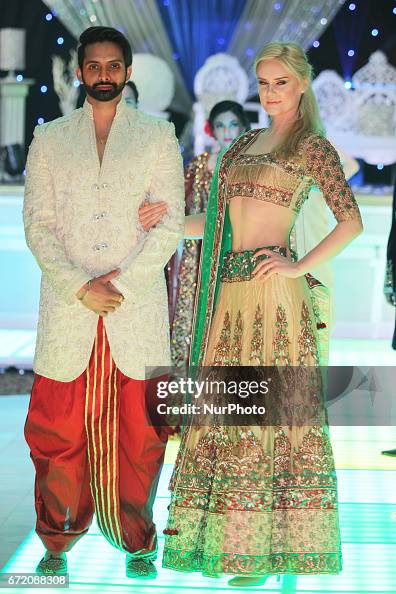Unlock the Secrets of Classic Eastern Wear
Exploring the enigmatic realm of classic Eastern wear explores a realm where society, artistry, and history assemble to create garments that transcend plain fabric and string. The intricate tapestry of practice interwoven with modern aspects offers a look right into a world where every stitch narrates, every concept a symbol of importance. Unveiling the secrets behind these creations introduces a tapestry of heritage waiting to be deciphered, inviting one to trip via the ethereal appeal and aura of Eastern fashion.
History of Eastern Style
The background of Eastern fashion go back centuries, showing the rich social heritage and customs of varied regions across Asia. Each area boasts its special styles, textiles, and designs that have actually been affected by factors like climate, religious beliefs, social status, and trade paths. eastern wear pakistan. As an example, the elaborate silk garments of China symbolize beauty and class, while the vivid saris of India display a kaleidoscope of patterns and shades.
In Japan, the kimono has actually been a sign of practice and improvement for generations, with different designs worn for different events. The hanbok in Korea represents the country's ingrained custom-mades and is still worn throughout essential ceremonies. The background of Eastern fashion is a tapestry of technology and tradition, mixing ancient exercise with contemporary impacts to develop a dynamic and ever-evolving market. Comprehending the origins of these iconic garments provides understanding right into the cultural relevance and workmanship that proceed to inspire contemporary designers worldwide.
Significance of Traditional Outfit
Standard clothing functions as a social symbol, symbolizing the worths, beliefs, and heritage of communities in Eastern societies. eastern wear pakistan. These garments are not merely items of textile but are symbolic representations of the rich history and traditions passed down with generations. In Eastern societies, typical outfit plays a significant role in events, celebrations, and day-to-day live, mirroring the social standing, local associations, and also marital condition of people
The importance of traditional attire surpasses looks; it is a way for people to get in touch with their origins and reveal pride in their social identity. Each garment, from the complex sarees of India to the streaming hanboks of Korea, carries with it a story of workmanship, meaning, and meaning that is deeply deep-rooted in the fabric of culture.
Additionally, typical attire offers as a visual language, communicating tales of unity, durability, and accomplishment. By putting on these garments, people not only recognize their heritage but additionally add to the preservation and party of their cultural heritage.
Development of Eastern Embroideries
Eastern embroideries have a rich background that spans centuries and have constantly advanced to incorporate diverse social impacts and react to shifting creative trends. The development of Eastern needleworks can be mapped back to old human beings where complex styles were hand-stitched onto materials utilizing standard techniques.

Today, Eastern embroideries remain to advance, mixing traditional craftsmanship with modern design perceptiveness to develop classic items that commemorate the appeal of multiculturalism and creative technology.
Luxurious Fabrics in Eastern Wear
Luxurious fabrics play an essential duty in boosting the aesthetic charm and quality of Eastern wear, enhancing the general appeal and elegance of conventional garments. Eastern wear is renowned for its opulent textiles that not just show the region's abundant social heritage however likewise indicate style and elegance. Silk, a material synonymous with luxury, is typically utilized in crafting Eastern outfit, imparting a glossy shine and a soft, smooth texture. The fine strings of silk not only curtain magnificently but also include a touch of luxury to clothing.
In enhancement to silk, fabrics like velvet, brocade, and chiffon are likewise typically included in Eastern wear. These glamorous materials not just raise the aesthetic appeal of Eastern wear however additionally make certain a feeling of improvement and sophistication that goes beyond time.
Incorporating Eastern Style Today
In modern style landscapes, the assimilation of Eastern affects offers a harmonious fusion of cultural heritage and contemporary straight from the source aesthetic appeals. informative post Developers and style enthusiasts alike are welcoming the rich tapestry of Eastern style, incorporating typical aspects into modern-day silhouettes and styles. From detailed needlework to elegant materials and dynamic colors, Eastern fashion today provides a varied variety of options that satisfy a worldwide audience.
One means Eastern style is making its mark in modern wardrobes is via the adjustment of typical garments such as the bathrobe, saree, or qipao right into everyday wear. These items, when scheduled for special celebrations, are now reimagined in even more casual forms, permitting for their unification into day-to-day fashion options. In addition, making use of conventional patterns and themes in Western-style clothing adds a touch of exotic sophistication to contemporary clothing.

Final Thought
To conclude, exploring the rich background, relevance, and evolution of Eastern style unveils a deep-rooted link to heritage and values. The glamorous fabrics and complex needleworks of Eastern use showcase the flexibility and timelessness of typical layouts. Including Eastern influences in modern fashion permits for a combination of practice and technology, producing an unified balance in between the past and today.
Luxurious textiles play a pivotal duty in elevating the visual appeal and high quality of Eastern wear, boosting the general attraction and elegance of typical garments. Designers and style fanatics alike are accepting the abundant tapestry of Eastern fashion, integrating typical aspects right into modern-day shapes and styles. From detailed embroidery to luxurious materials and lively shades, Eastern style today provides a varied array of alternatives that cater to a worldwide audience.
One method Eastern style is making its mark in contemporary wardrobes is with the adjustment of traditional garments such as the robe, saree, or qipao right into day-to-day wear. The elegant materials and complex needleworks of Eastern use showcase the versatility and timelessness of standard designs.